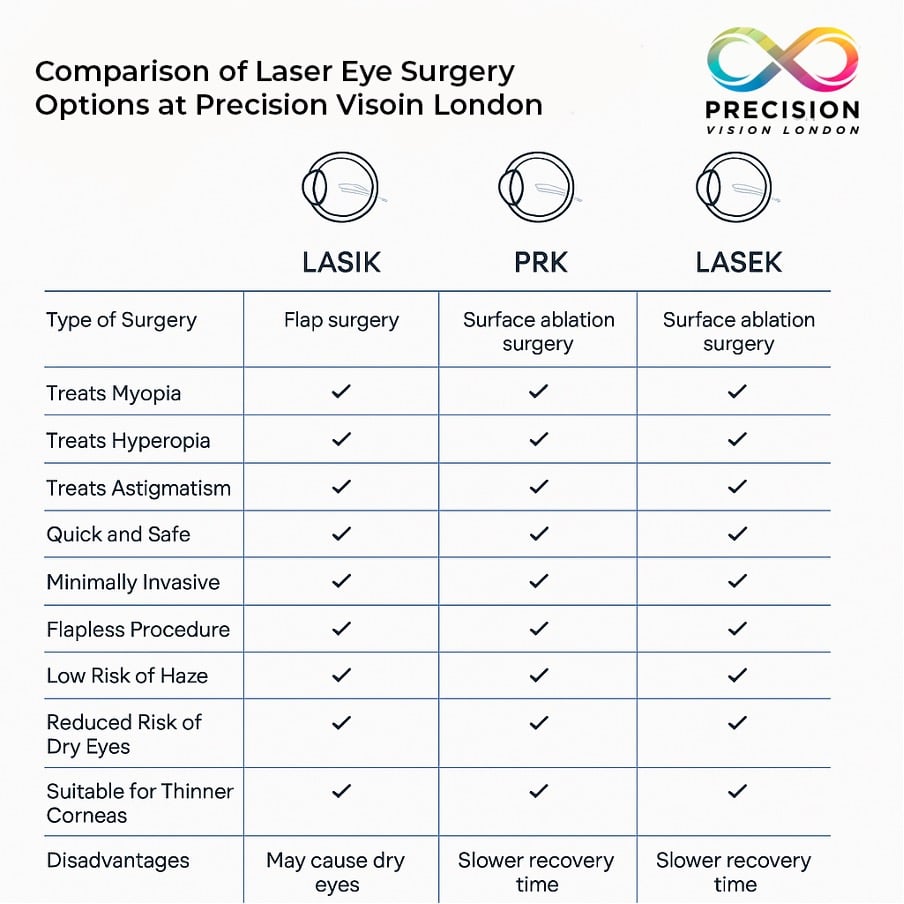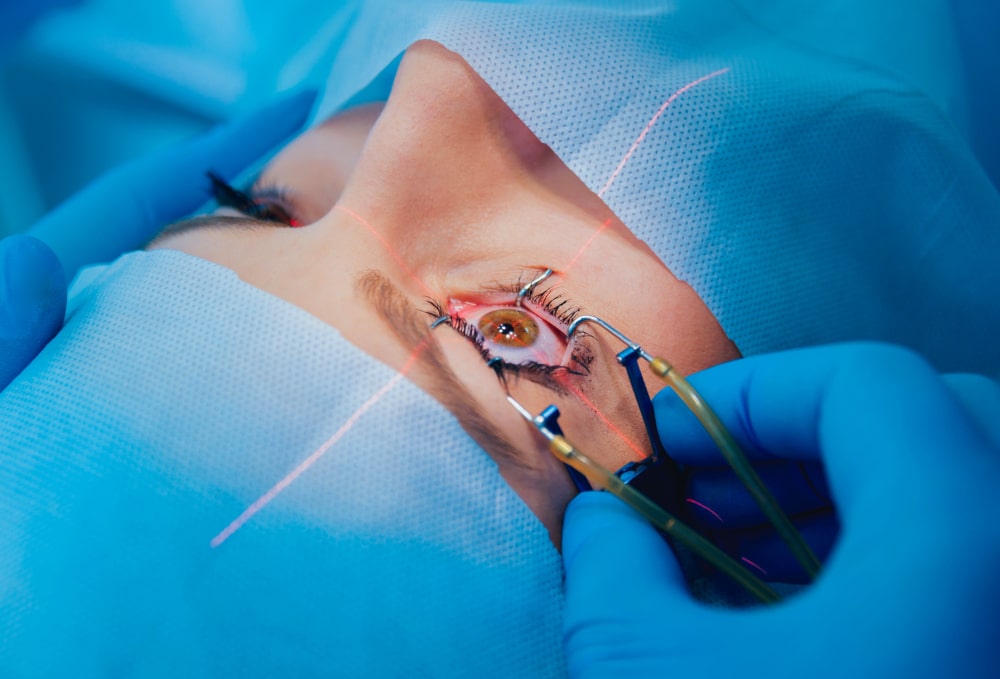Laser eye surgery gives pilots and first responders the freedom they need from wearing glasses or contacts in their demanding jobs. Clear vision can mean the difference between life and death in high-stakes environments. Glasses and contact lenses create major operational challenges. The Ministry of Defence allows laser vision correction procedures like LASIK and Trans-PRK for military pilots when they meet specific requirements.
The surgery fixes many vision issues such as short-sightedness (myopia), long-sightedness (hyperopia), astigmatism and reading vision (presbyopia). The benefits go way beyond just convenience. Better vision without glasses or contacts boosts operational readiness, especially in dangerous and high-risk situations. Police officers and firefighters can often get back to active duty just 24 hours after certain procedures. Millions of successful procedures worldwide have made laser eye surgery a real breakthrough for professionals who must meet strict vision standards.
This piece will help you find the right types of laser eye surgery for pilots and first responders. You’ll learn about UK aviation and military standards’ eligibility criteria, safety factors to think about, and why expert surgeons need to create personalised treatment plans for these demanding jobs.

Types of Laser Eye Surgery Suitable for High-Performance Roles
Professionals working in demanding roles need to pick the right laser vision correction procedure. Each technique has its own advantages that work best for people with strict visual needs in challenging environments.
LASIK vs PRK: Suitability for Pilots and First Responders
These are two main ways to correct vision with laser for high-performance professionals. LASIK creates a corneal flap before reshaping the tissue underneath with a laser. This method gives you less discomfort and quick visual recovery within 1-2 days.
PRK takes a different approach by removing the cornea’s thin top layer completely before laser reshaping. Recovery takes longer and you might feel discomfort for 2-3 days. The upside is that PRK eliminates any complications related to flaps that could cause problems during high-impact events.
Many first responders, military personnel, and police officers choose PRK. They like that there’s no corneal flap to worry about during physical confrontations or trauma situations. Military branches and aviation sectors now accept both procedures. Your individual assessment will determine which option works best.
SMILE Procedure: Minimally Invasive Option
Small Incision Lenticule Extraction (SMILE) is an advanced option that creates a small disc (lenticule) inside the cornea. Doctors remove it through a tiny cut. This method limits damage to the cornea’s outer nerves, which reduces dry eye complications.
Studies show SMILE stays stable, with changes less than 0.5 diopters over 12 months. The Air Force lets pilots get SMILE with proper waivers. SMILE gives you quick recovery like LASIK and keeps your cornea strong – perfect for people in physically demanding jobs.

Wavefront-Guided LASIK for Enhanced Night Vision
Wavefront-guided LASIK works great for pilots and first responders who work in tough lighting conditions. This advanced technique creates a custom treatment plan by mapping your eye’s unique optical patterns. Research shows big improvements in night vision with wavefront-guided LASIK. Regular LASIK made night driving harder for 32-38% of patients. The wavefront-guided method made vision better in most cases, with only 0-3% having reduced ability.
Your contrast sensitivity – the ability to tell objects apart in low light – gets better with wavefront-guided technology. This improved vision in challenging conditions makes these treatments ideal for aviation professionals and emergency responders who need perfect vision at all times.
Eligibility Criteria and Vision Standards in the UK
The UK enforces strict vision standards for pilots and first responders. This becomes even more critical when laser eye surgery enters the picture. These rules help ensure safety and peak visual performance in demanding situations.
CAA Class 1 and Class 2 Vision Requirements
The Civil Aviation Authority (CAA) sets different visual standards based on licence class. Commercial pilots need Class 1 medical certificates with distant visual acuity of 6/6 or better in each eye separately. Both eyes together must achieve 6/6. Class 2 certificate holders must reach 6/12 in each eye and 6/6 with both eyes.
The CAA accepts specific refractive error ranges: hypermetropia up to +5.0 dioptres, myopia up to -6.0 dioptres, astigmatism up to 2.0 dioptres, and anisometropia up to 2.0 dioptres. Applicants beyond these ranges need special evaluation from CAA medical assessors. New pilots must pass Ishihara testing for colour vision. Pilots who wear corrective lenses need their latest optician’s report during medical examinations.
MOD Guidelines for Military Pilot Applicants
The Ministry of Defence lets military pilot candidates undergo laser eye surgery under certain conditions. PRK, LASEK, and LASIK procedures get the green light. Candidates should be 22 or older and wait six months after surgery before applying.
Your prescription before surgery must fall between -5.00 and +2.00 dioptres. Your vision needs to stay stable for three months after surgery. The RAF screens corneal topography to spot any undisclosed corneal refractive surgery. Military candidates go through detailed eye evaluations. These include refractive error measurements and best spectacle-corrected Snellen visual acuity tests.
Post-Surgery Stability and Visual Acuity Standards
Each procedure type and certification class has its own stability requirements. CAA Class 1 certification after refractive surgery needs stable refraction. Daily variation should stay under 0.75 dioptres.
Doctors check for complications after surgery. They test glare sensitivity and mesopic contrast sensitivity. Class 1 and 3 applicants must see an aviation eye specialist at an aeromedical centre. This happens a week after their surgeon’s follow-up. Recovery times vary by procedure. LASIK patients usually see results faster than PRK patients. You must finish all post-surgery medications before getting certified.
Safety, Recovery, and Long-Term Outcomes
Professionals seeking laser eye surgery must prioritise safety above all else. In high-stakes professions, perfect vision isn’t optional—it’s essential.
Is Laser Eye Surgery Safe for Operational Roles?
Laser eye surgery proves remarkably safe for operational professionals. Studies show serious complications occur in less than 1% of cases. Research demonstrates that laser surgery carries lower long-term risks of permanent vision problems than contact lens wear. The Civil Aviation Authority allows refractive surgery for pilots, but requires a full picture after all procedures.

How Long Does Laser Eye Surgery Last in Active Environments?
The results should last permanently, and vision typically stabilises within 2-3 months. Natural ageing continues as expected. The largest longitudinal study following patients for 12 years found that about 10% experienced age-related vision changes. Your vision’s stability after surgery depends on good aftercare and protection from harsh environments.
Managing Glare and Contrast Sensitivity Post-Surgery
Patients retain their contrast sensitivity knowing how to spot objects against backgrounds—after LASIK. Night vision issues might affect some patients temporarily, but these problems clear up within weeks. Advanced wavefront-guided procedures can enhance contrast sensitivity in low light conditions.
Return-to-Duty Timelines for Different Roles
First responders can return to light duties 24-48 hours after LASIK. Pilots face more stringent rules—CAA guidelines require at least 8 weeks of recovery time. Military pilots must show stable vision for a minimum of three months after surgery.
Why Choose Precision Vision London for Vision Correction
Laser eye surgery becomes a crucial choice for demanding professions. Precision Vision London offers advanced laser eye surgery that meets aviation and emergency service standards.
Advanced Diagnostic Technology and Wavefront Mapping
Precision Vision London’s state-of-the-art diagnostic equipment delivers unmatched accuracy. The clinic uses wavefront technology to map microscopic imperfections in your visual system. This technology, which space programmes originally developed, creates a detailed 3D map of your eye. Unlike simple prescription measurements, wavefront analysis captures over 1,200 micro readings of your prescription—five times more than previous technology. This precision measures to 0.01 Dioptres, far more accurate than the 0.25 Dioptres standard with glasses.
Personalised Treatment Plans by Expert Surgeons
Expert surgeons at Precision Vision London create custom treatment plans based on detailed assessments. Each patient gets a full picture that dissects corneal thickness, shape, and overall eye health. This detailed assessment helps surgeons recommend the most suitable procedure for your unique visual profile. Our surgeons use their vast experience with aviation and emergency service personnel to craft treatment plans that meet occupation-specific visual needs.
Trusted Outcomes for Aviation and Emergency Professionals
High-performance professionals trust the clinic because of proven results. Studies show that 90-94% of patients who receive wavefront-guided treatment achieve visual acuity of 20/20 or better. Military and commercial pilots can use our wavefront technology because it gives superior outcomes. This advanced approach reduces night vision complications through wider ablation zones. This benefit proves especially valuable for professionals who work in challenging light conditions.
Conclusion
Laser eye surgery revolutionises the professional lives of pilots and first responders who just need perfect vision in high-stakes situations. In this piece, we explored how LASIK, PRK, SMILE, and wavefront-guided treatments give distinct advantages to people working under strict visual requirements. On top of that, the detailed CAA and MOD guidelines help these professionals undergo treatment safely while following regulatory standards.
Modern laser vision correction’s safety profile shows evidence of medical advancement, with complications occurring in less than 1% of cases. Recovery times vary between procedures. Most professionals can return to active duty within days or weeks, based on their role and the surgical technique they choose.
Precision Vision London leads the vanguard of this specialised field. The clinic uses state-of-the-art diagnostic equipment with wavefront mapping technology that captures over 1,200 micro readings of your prescription. This exceptional detail helps our expert surgeons create personalised treatment plans that match your unique visual profile and job requirements. The clinic’s success with aviation and emergency service personnel shows why many high-performance professionals trust us with their vision care.
Your trip toward regulation-compliant vision starts with expert guidance. Book your consultation today to gain control of your career with sharper, regulation-compliant vision. Precision Vision London’s team understands pilots and first responders’ unique challenges. We provide corrective procedures and detailed care that lines up with your professional needs. Your vision deserves precision, especially when lives depend on it.
Key Takeaways
For pilots and first responders, laser eye surgery offers life-changing freedom from corrective eyewear whilst meeting strict professional vision standards.
- PRK is often preferred over LASIK for first responders due to no corneal flap, reducing injury risks during physical confrontations
- UK pilots need 6/9 vision (Class 1) or 6/12 (Class 2) post-surgery, with MOD requiring 6-month stability before military applications
- Wavefront-guided LASIK significantly improves night vision performance, with only 0-3% experiencing reduced ability versus 32-38% with conventional LASIK
- Most first responders return to light duties within 24-48 hours, whilst pilots face stricter 8-week CAA recovery periods
- Advanced wavefront technology captures over 1,200 micro readings compared to basic prescription measurements, ensuring precision for demanding professions
The key to successful outcomes lies in choosing experienced surgeons who understand the unique visual demands of high-performance careers and can navigate complex regulatory requirements.
FAQs
Q1. Is laser eye surgery suitable for fighter pilots? Yes, laser eye surgery is now permitted for fighter pilots in many air forces. The US Air Force and Navy have policies allowing pilots who have undergone LASIK to fly, provided they meet specific post-surgery vision requirements and stability criteria.
Q2. What are the vision standards for commercial pilots after laser eye surgery? For UK commercial pilots (Class 1 medical certificate), distant visual acuity must be 6/9 or better in each eye separately and 6/6 with both eyes. Class 2 certificate holders need 6/12 in each eye and 6/9 binocularly. Pilots must also meet specific standards for refractive errors and demonstrate stable vision post-surgery.
Q3. How soon can first responders return to duty after laser eye surgery? Most first responders can resume light duties within 24-48 hours after LASIK surgery. However, full recovery times may vary depending on the specific procedure and individual healing rates. It’s essential to follow post-operative care instructions and consult with your surgeon before returning to active duty.
Q4. Which type of laser eye surgery is best for professionals working in challenging light conditions? Wavefront-guided LASIK is particularly beneficial for professionals who operate in challenging light conditions, such as pilots and first responders. This advanced technique can improve night vision capabilities and enhance contrast sensitivity in dim lighting, making it valuable for those who need optimal vision in all environments.
Q5. How long do the effects of laser eye surgery last for active professionals? Laser eye surgery results are designed to be permanent, with vision typically stabilising within 2-3 months post-surgery. However, natural ageing processes can still affect vision over time. Studies tracking patients over 12 years found that approximately 10% experienced age-related vision changes. Regular check-ups and proper eye care are essential for maintaining long-term results.
Authors & Reviewer
-
 Olivia: Author
Olivia: AuthorHi, I'm Olivia, a passionate writer specialising in eye care, vision health, and the latest advancements in optometry. I strive to craft informative and engaging articles that help readers make informed decisions about their eye health. With a keen eye for detail and a commitment to delivering accurate, research-backed content, I aim to educate and inspire through every piece I write.
-
 Dr. CT Pillai: Reviewer
Dr. CT Pillai: ReviewerDr. CT Pillai is a globally recognised ophthalmologist with over 30 years of experience, specialising in refractive surgery and general ophthalmology. Renowned for performing over 50,000 successful laser procedures.

